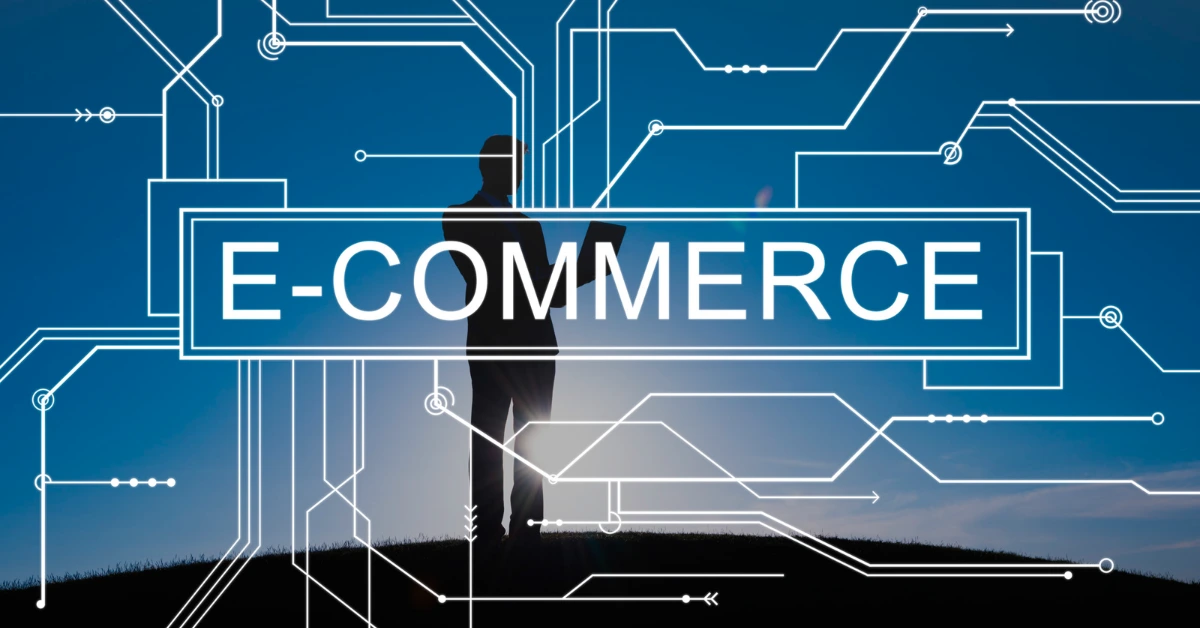Digital advertising (or online advertising) uses internet channels to promote brands, products or services. These channels include search engines, websites, social media, email, mobile apps and streaming platforms. Ads can take many forms – text, image, video or audio – and are often targeted to specific audiences. This allows marketers to precisely reach users by demographics or interests and to measure and optimize campaigns in real time. For example, search ads appear in Google or Bing results when people look for related keywords, while display or social ads appear on websites or in newsfeeds to raise awareness.
Digital advertising campaigns typically use pricing models like cost-per-click (CPC) or cost-per-thousand-impressions (CPM), making them cost-effective and highly scalable. The key advantages of digital advertising include:
- Precise Targeting: Platforms let you define audiences (age, location, interests, etc.) so only likely customers see the ads.
- Measurability: Detailed metrics (clicks, impressions, conversions) are tracked for every ad, letting advertisers see exactly how campaigns perform.
- Flexibility: Ads can be updated, paused, or retargeted almost instantly. Budgets and creative elements can be adjusted on the fly to improve results.
- Cost-Effectiveness: You can start with small budgets and scale up once you identify effective messages.
In practice, marketers choose from many digital advertising formats depending on their goals and audience. For example:
- Search Ads: Text ads on search engine results pages (SERPs) triggered by user queries.
- Display/Banner Ads: Visual ads (images, banners, or rich media) on websites and apps.
- Social Media Ads: Sponsored posts and videos on platforms like Facebook or Instagram.
- Video Ads: Pre-roll or in-stream video spots on sites like YouTube or streaming services.
- Native Ads: Sponsored content that “blends” into the host website or feed.
- Email Marketing: Promotional emails or newsletter sponsorships sent to subscribers.
- Mobile Ads: Ads in mobile apps, games or via SMS targeting smartphone users.
- Audio Ads: Ads played during streaming music or podcasts (e.g. Spotify, Pandora).
Below we explore these types of digital advertising in depth, with examples of how each works and when to use it.
Search Engine Advertising (PPC/SEM)

Search engine advertising (often called SEM or paid search) lets you place ads on search results pages. These ads are text-based and appear when users enter relevant queries. For example, if someone searches “running shoes online”, a retailer’s ad might appear at the top of Google’s results. Advertisers select keywords to bid on; each time a user searches those terms, an auction runs to determine which ads show, usually on a pay-per-click (CPC) basis. Because these ads appear to users who are already searching for a product or service, they often generate high-quality traffic. Effective search campaigns rely on thorough keyword research: finding the right keywords (including long-tail phrases) ensures your ads reach interested customers. Major platforms like Google Ads and Microsoft Advertising (Bing Ads) dominate this space. Search ads can include extensions (additional links or info) and even shopping ads with product images. In summary, paid search is ideal for capturing demand from users who are actively looking to buy – a highly intent-driven strategy.
Display Advertising
Display advertising uses visual banner ads (images, graphics or video) on websites and apps. These ads appear in designated spots (e.g. top, sidebars, or in-content banners) on sites that match a campaign’s target audience. Unlike search ads, display ads do not appear based on a query; instead, they rely on contextual or behavioral targeting. For example, an art supply company might display ads on arts & crafts blogs or news sites to reach craft enthusiasts. Display ads are often sold through ad networks (like Google’s Display Network) or programmatic exchanges. They are a great way to raise brand awareness at scale. Advertisers can target by topic, keyword, or user interests, and can also use remarketing (see below) to display ads to users who previously visited their site.
Display ads are typically measured by impressions and click-through rate (CTR), though newer formats can be interactive. An example would be a banner ad at the top of a news site promoting a new product, or a rich-media ad (animated HTML5) on a sports app. This format complements search advertising by reaching users earlier in the funnel – even before they have search intent. Display ads help establish visual identity and drive traffic to landing pages; they are also one of the most cost-effective ways to reach a large audience.
Social Media Advertising

Social media advertising covers ads on platforms like Facebook, Instagram, Twitter (X), LinkedIn, TikTok, Snapchat, and others. These ads can be images, videos, carousels (multiple images), stories, or other formats, and they appear within the normal feed or pages of the platform. Because users spend hours on social networks, these ads are effective at building brand awareness and engagement.
For instance, a fashion brand might run a carousel ad on Facebook showcasing several outfits, or an influencer-sponsored post on Instagram promoting a skincare product. Social platforms offer precise audience targeting (by age, interests, behavior, etc.) and detailed analytics. Ads are labeled with “Sponsored” or similar tags, but otherwise blend into the user experience. Social ads often provide clear calls-to-action (like “Shop Now” or “Learn More”) and can link directly to the advertiser’s site. Compared to traditional media, social ads are generally cost-effective and flexible – budgets can be adjusted daily, and you can measure clicks, likes, comments or conversions in real time. In summary, social media ads let businesses tap into the vast user bases of popular networks and target messages to relevant segments of that audience.
Video Advertising
Video advertising uses online video content as the ad format. The most familiar example is a pre-roll or mid-roll video ad on platforms like YouTube or Twitch: when a user plays a video, a short ad (15–30 seconds) runs before or during the content. Video ads can also appear in social feeds or as in-feed video posts on Instagram, TikTok or LinkedIn. Because video combines sight and sound, it can convey a lot of information quickly.
For example, a tech company might produce a brief video ad demonstrating a gadget, which then plays before related YouTube videos. Streaming platforms (OTT/CTV) like Hulu or Amazon Prime Video also sell video ads that play during TV shows or movies. Out-stream video (ads that run in web page video players between paragraphs of text) is another format. Video ads tend to have high engagement; viewers often remember visual stories better. Advertisers use video to build excitement, show how products work, or share testimonials. Analytics can include view count, view rate, and whether viewers watched the full ad. Modern video ads can be interactive (clickable elements or end-screens) to further drive traffic. Overall, video advertising is a powerful way to captivate audiences and increase brand recall online.
Native Advertising
Native advertising is a style of digital advertising designed to mimic the look and feel of the platform where it appears. Instead of a banner or pop-up, a native ad might appear as a recommended article or in-feed story that matches surrounding content. For example, a news website might have a list of “Recommended articles” at the end of an article; some of those could be sponsored posts by advertisers. On social media, a promoted tweet or LinkedIn article is native. Even search engine ads, when styled to look like search results, are a form of native advertising.
Because native ads blend in, users often find them less intrusive and more engaging. They rely on good content and relevance: a travel blog might feature a native ad article about “Top 10 Packing Tips – Sponsored by [Luggage Brand]”, which feels like part of the editorial. Studies show native ads can achieve much higher click-through rates than standard display ads. However, they must be labeled (e.g. “Sponsored” or “Paid content”) to maintain transparency. Native advertising works across devices and networks, and is especially useful when the goal is content marketing – educating or entertaining the audience while softly promoting a brand.
Email Advertising

Email advertising involves sending promotional messages or newsletters to a list of subscribers. This can mean placing banner ads or sponsored content in someone else’s email newsletter, or using your own email list to send targeted offers. For example, a fitness brand might sponsor a popular health newsletter by including a promoted product link, or send a weekly email blast with a discount code to its own customers.
Because recipients have opted in, email ads can reach a very engaged audience. Key elements are an attention-grabbing subject line and a clear call-to-action. Email ads (or “email blasts”) are low-cost and can be highly personalized. Metrics like open rate, click rate, and conversions are easily tracked. In effect, email advertising is another form of digital advertising marketing that leverages owned or rented lists to generate interest and drive conversions.
Mobile Advertising
Mobile advertising encompasses any ad that appears on a smartphone or tablet. This includes mobile web banners, in-app ads, mobile search ads, and even SMS or push-notification campaigns. For instance, a game developer might show an interstitial ad (full-screen) for another app inside their game. Advertisers can also target users by location via mobile: a restaurant could push a promotion to users near the venue.
The vast majority of internet traffic now comes from mobile devices, so mobile ads are crucial for reaching on-the-go audiences. Formats include standard banner ads in mobile websites, native ads in apps, and short video or playable ads inside games. SMS marketing (text-message promotions) and app-based notifications (with permission) can also be effective, especially for local businesses. Mobile ads often use device data (OS, device model, app usage) for targeting. Because mobile screens are small, ads must be designed carefully. Overall, mobile advertising lets you capture the attention of consumers when they are browsing, gaming, or using apps on their phones.
Audio Advertising
Audio ads are digital advertising commercials that play during streaming audio content. Common examples are ads played between songs on free Spotify or Pandora, or ad spots on podcasts. For instance, when listening to a free music playlist, you might hear a 30-second ad for a movie or product between tracks. Podcast hosts often read sponsored messages in the middle of an episode.
Audio ads take advantage of a captive audience: users generally listen through a playlist or episode, so if they use a free service, they must hear the advertisement. These ads are purely auditory (no visuals), so the message and voiceover need to be clear and engaging. Advertisers target listeners by genre or topic (e.g., running shoe ads on a marathon training podcast). The benefit is that audio ads can reach consumers when they are not looking at a screen – at work, driving or exercising – making it a powerful way to build brand awareness. As part of a digital mix, audio advertising adds another dimension to reach audiences through their ears.
Affiliate and Influencer Marketing

Aside from traditional ad placements, brands often use affiliate marketing and influencer partnerships. In affiliate marketing, a company pays commission to partners (affiliates) for driving sales or traffic. For example, a tech blogger might include affiliate links to recommended gadgets; if a reader buys through that link, the blogger earns a percentage. Similarly, influencers on social media or content creators may promote products in their posts or videos, earning a fee or a cut of sales from unique discount codes or links. This approach is performance-based: you only pay when the affiliate’s promotion converts a user. It’s a low-risk way to leverage others’ reach – studies find that a significant portion of online shoppers discover new brands through affiliate links. Both affiliate and influencer campaigns blend into content, rely on social proof, and are especially effective for e-commerce and lifestyle brands.
Remarketing (Retargeting)
Remarketing (or retargeting) is a strategy that spans many ad types. It uses tracking data (cookies or pixels) to show ads specifically to people who have already visited your website or app. For example, if someone browses shoes on an online store but leaves without buying, remarketing allows the retailer to display ads for those same shoes when the user visits other sites or social media. In this way, the brand stays “top of mind” and entices the user back to complete a purchase. Remarketing can be done through display networks, social platforms or search (e.g., showing ads when they search related terms later). This type of advertising is highly effective for e-commerce: it reminds interested prospects of products they viewed. As Indeed notes, remarketing is especially powerful for online retailers to increase sales from already-engaged visitors. It leverages user behavior to improve conversion rates.
Programmatic Advertising
Programmatic advertising refers to the automated, data-driven buying of ad space. Instead of manually negotiating with publishers, marketers use software and algorithms (demand-side platforms, or DSPs) to purchase ad impressions in real time. For example, when a user loads a webpage, an instant auction determines whose ad will display, based on the marketer’s target criteria and bid. Programmatic covers many formats (display, video, mobile, native) and uses audience data (demographics, interests, browsing history) to place the most relevant ads to each user.
The advantage of programmatic is efficiency and scale. It replaces the old labor-intensive process of buying media with clicks, smart bidding and AI optimization. For instance, a clothing retailer could set up a programmatic campaign to bid on impressions shown to fashion-interested demographics; the platform would handle when and where to show the ads. Programmatic allows granular targeting and rapid adjustment of budgets or creatives. In short, it’s the engine behind many modern digital advertising campaigns, making it easier to reach the right audience at the right time across the web.









Share